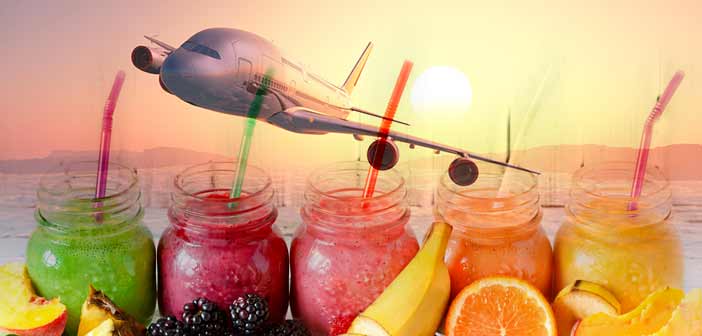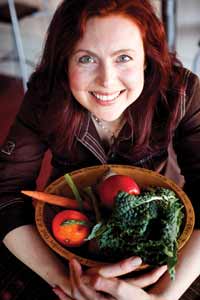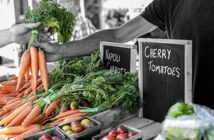 Last August, I had the enlightening experience of interviewing 30 experts on toxicity as part of the Detox Summit (www.thedetoxsummit.com). While I always knew that environmental toxins were problematic for the planet on the whole and for people as individuals, it seems that awareness has ramped up several notches. Just about every day, I can find press releases on studies informing people about the dangers of these exposures. Truly, chemical body burden cannot be ignored any longer. After all, published scientific articles are indicating that the world’s top chronic diseases are associated with toxicity:
Last August, I had the enlightening experience of interviewing 30 experts on toxicity as part of the Detox Summit (www.thedetoxsummit.com). While I always knew that environmental toxins were problematic for the planet on the whole and for people as individuals, it seems that awareness has ramped up several notches. Just about every day, I can find press releases on studies informing people about the dangers of these exposures. Truly, chemical body burden cannot be ignored any longer. After all, published scientific articles are indicating that the world’s top chronic diseases are associated with toxicity:
• Low-levels of arsenic in water(1) and body buildup of persistent organic pollutants(2) appear to be correlated with increased incidence of type 2 diabetes.
• Heavy metals like mercury are now being recognized as culprits in autism(3).
Higher blood lead levels are linked to increased blood pressure and risk for cardiovascular disease(4, 5).
• Accumulation and metabolism of plastics in the body, like bisphenol A, is resulting in greater rates of chronic diseases like cardiovascular disease and diabetes(6).
• Endocrine disruptors are ubiquitous in personal care products and foods, leading to deleterious changes in metabolic pathway. These toxins have even been referred to as “obesogens”(7, 8).
Most people have no idea of the harms incurred from toxic exposure. Detox isn’t just about poisons; it’s about knowing how to remove the barriers to your health. And, there are small and big steps we can be taking along the way.
In my opinion, perhaps one of the biggest, unrecognized sources of toxicity is travel. There are many layers of chemicals stacking up as you go from home to your destination:
• Radiation from the airport scanners and being in transport on the plane(9, 10).
• A menu of toxins of your choice all available either at the airport, or especially on the plane, including:
– Bottled water (containing plasticizers like Bisphenol A in the plastic itself)
– Hot coffee and tea in Styrofoam cups, leeching out styrene and other aromatic compounds(11).
– Potential food “triggers” like processed dairy and sugar, high fructose corn syrup-containing soft drinks, alcohol, peanuts, and gluten-rich snacks
• Stale, stagnant air circulating amongst coughing, sneezing, runny-nosed passengers in close quarters

Deanna Minich, PhD, CN, RYT, is a mind-body-spirit nutritionist and author.
Here are my tips for surviving the toxicity of travel through edibles.
1. Eat smart before you’ve set your foot out the door: Don’t delay, or your body will pay. Prepare two or three days before travel by loading up on nutrient-dense foods. Concentrate your nutrition with vegetable-rich smoothies, fresh salads, and steamed veggie stir fries.
2. Load your carry-on with spot-on healthy foods: Don’t be caught in a jam with little or no choices, forcing you to have to eat airport or airplane foods. Plan ahead by bringing low-maintenance healthy foods. My favorites are avocados, apples, dark chocolate, and a homemade nut and seed mix.
Avocados are at the top of the list since they are high in potassium (about double that of a banana), fiber (who would have thought there would be roughly nine grams in a single avocado), and healthy oils to keep you satiated in the throes of long flights and jet lag. Wash the thick avocado skin well before you pack in a plastic baggy in your purse or backpack. If you can remember, add a plastic spoon. If you forget the spoon, try the “avocado taco” approach of cutting open the avocado with a clean fingernail, separate the halves, and eat each one separately like a taco, holding onto the skin and pushing up each bite (you’ll have to take out the big pit from one of the halves).
Apples are portable and satisfying; just wash the outer skin since they tend to contain the highest pesticide residues of all fruits according to reports from the Environmental Working Group(12). Dark chocolate, or 70% cocoa and above, is a most welcome addition since cocoa contains flavonoids that open up blood vessels(13). When you are on the plane, circulation can be compromised due to long sitting times, so those dark cocoa polyphenols are perfect for keeping your circulation free flowing.
Finally, a hearty, homemade nut-and-seed mix is easy to make: toss together almonds, walnuts, hazelnuts, sunflower seeds, and pumpkin seeds, and you’ve got yourself some sustainable staying power for long hauls, and your concoction will no doubt be less costly than some of the oil-saturated ones you’ll find in the airport.
3. Pack dietary supplements for the trip ahead: I put together a small sack of all my supplemental essentials, especially because there is a high probability that I won’t be eating the nutrient-dense foods I normally eat at home while traveling and because my nutrient requirements may be greater due to enhanced stress associated with travel. I typically pack a high-quality protein powder and shaker cup for breakfast meals when I want to avoid the usual brown-yellow-white, high-aging (meaning high in poor-quality fats and high in advanced glycation endproducts that come along in fried, grilled or roasted foods) foods at the hotel.
In addition to protein, I like to include in my supplement stash a phytonutrient/green powder, one that is rich in Spirulina and berries. I can drink this powder in water on the plane in my shaker cup, and it’s perfect. You get some looks and questions from surrounding passengers, and I’m always happy to share my recipe secret. The other must-have supplements are probiotics to protect me against bad bugs taken in through food and to fortify my immune system, along with zinc, vitamin C/bioflavonoids, and a multi-vitamin to make up for whatever I’m missing across the board in my daily eating.
4. When you have to buy foods at the airport, aim for these choices: There’s usually a café of some sort where you can get hot tea. Aim for the power-packed punch of a long-steeped green tea rich in catechins, rooibos, or passion tea. If you need to eat, go with something high in protein. For example, if you find a Mexican fast food restaurant, ask for whole black and/or pinto beans, vegetables, and guacamole. At other restaurants, ask for vegetables whenever possible, and for those that are steamed rather than those dripping in sugary sauce.
Travel can be loaded with stress and toxins, but tweaking your routine slightly by planning and knowing how to navigate airport eating can help you to staying flying high and healthy no matter where you land.
References:
1. Bräuner EV, Nordsborg RB, Andersen ZJ, Tjønneland A, Loft S, Raaschou-Nielsen O. Long-Term Exposure to Low-Level Arsenic in Drinking Water and Diabetes Incidence: A Prospective Study of the Diet, Cancer and Health Cohort. Environ Health Perspect. 2014 Jun 13. [Epub ahead of print]
2. De Tata V. Association of dioxin and other persistent organic pollutants (POPs) with diabetes: epidemiological evidence and new mechanisms of beta cell dysfunction. Int J Mol Sci. 2014 May 5;15(5):7787-811. doi: 10.3390/ijms15057787.
3. Kern JK1, Geier DA, Audhya T, King PG, Sykes LK, Geier MR. Evidence of parallels between mercury intoxication and the brain pathology in autism. Acta Neurobiol Exp (Wars). 2012;72(2):113-53.
4. Navas-Acien A1, Guallar E, Silbergeld EK, Rothenberg SJ. Lead exposure and cardiovascular disease–a systematic review. Environ Health Perspect. 2007 Mar;115(3):472-82. Epub 2006 Dec 22.
5. Vaziri ND. Mechanisms of lead-induced hypertension and cardiovascular disease. Am J Physiol Heart Circ Physiol. 2008 Aug;295(2):H454-65. doi: 10.1152/ajpheart.00158.2008. Epub 2008 Jun 20.
6. Lang IA, Galloway TS, Scarlett A, Henley WE, Depledge M, Wallace RB, Melzer D. Association of urinary bisphenol A concentration with medical disorders and laboratory abnormalities in adults. JAMA. 2008 Sep 17;300(11):1303-10. doi: 10.1001/jama.300.11.1303. Epub 2008 Sep 16.
7. Chen JQ1, Brown TR, Russo J. Regulation of energy metabolism pathways by estrogens and estrogenic chemicals and potential implications in obesity associated with increased exposure to endocrine disruptors. Biochim Biophys Acta. 2009 Jul;1793(7):1128-43. doi: 10.1016/j.bbamcr.2009.03.009. Epub 2009 Apr 5.
8. Sharpe RM, Drake AJ. Obesogens and obesity–an alternative view? Obesity (Silver Spring). 2013 Jun;21(6):1081-3. doi: 10.1002/oby.20373.
9. Brenner DJ. Are x-ray backscatter scanners safe for airport passenger screening? For most individuals, probably yes, but a billion scans per year raises long-term public health concerns. Radiology. 2011 Apr;259(1):6-10. doi: 10.1148/radiol.11102347
10. Mehta P1, Smith-Bindman R. Airport full-body screening: what is the risk? Arch Intern Med. 2011 Jun 27;171(12):1112-5. doi: 10.1001/archinternmed.2011.105. Epub 2011 Mar 28.
11. Ahmad M1, Bajahlan AS. Leaching of styrene and other aromatic compounds in drinking water from PS bottles. J Environ Sci (China). 2007;19(4):421-6.
12. Environmental Working Group, Dirty Dozen list for 2014: http://www.ewg.org/foodnews/summary.php, accessed 6/25/14
13. West SG, McIntyre MD, Piotrowski MJ, Poupin N, Miller DL, Preston AG, Wagner P, Groves LF, Skulas-Ray AC. Effects of dark chocolate and cocoa consumption on endothelial function and arterial stiffness in overweight adults. Br J Nutr. 2014 Feb;111(4):653-61. doi: 10.1017/S0007114513002912. Epub 2013 Nov 25.



